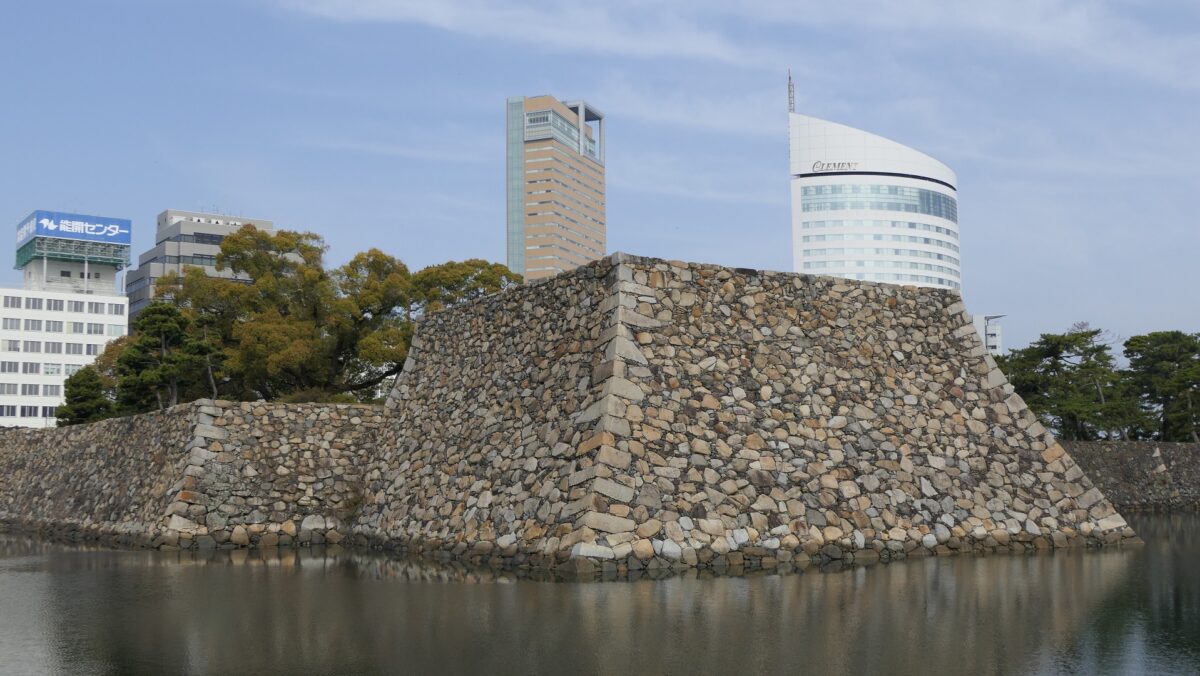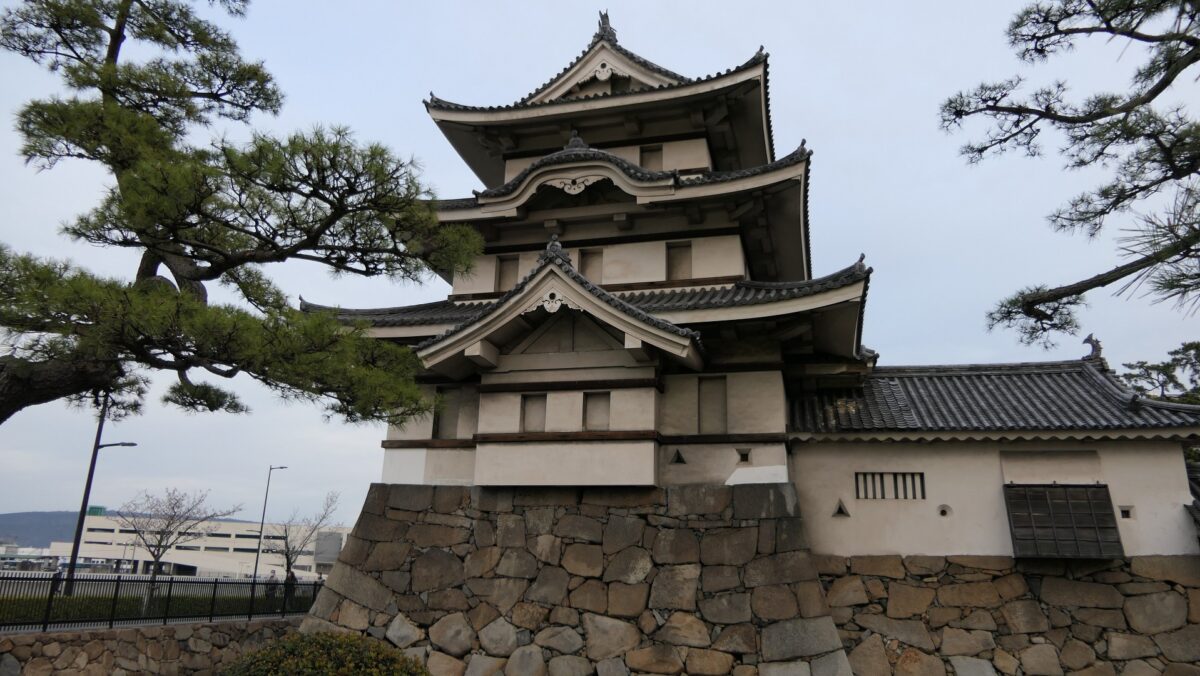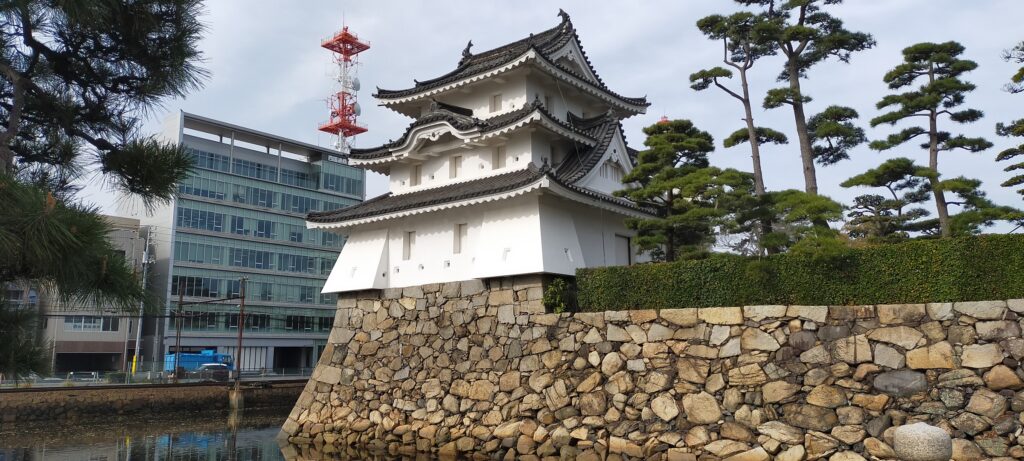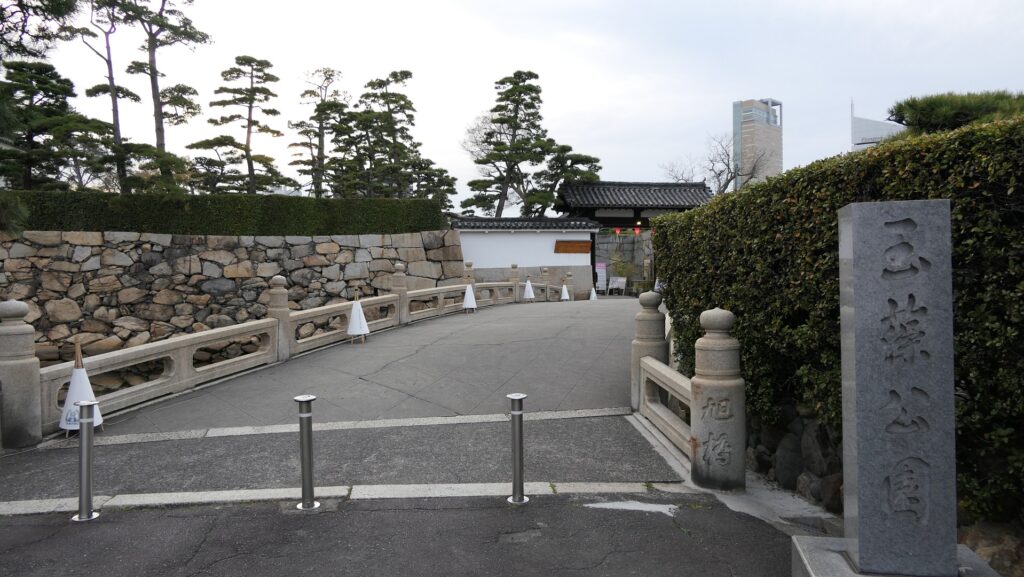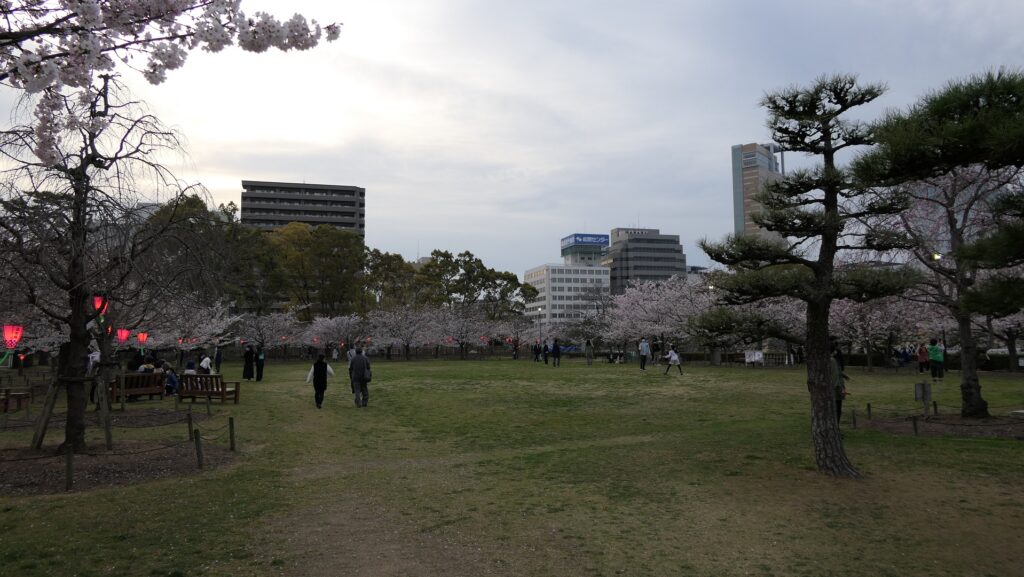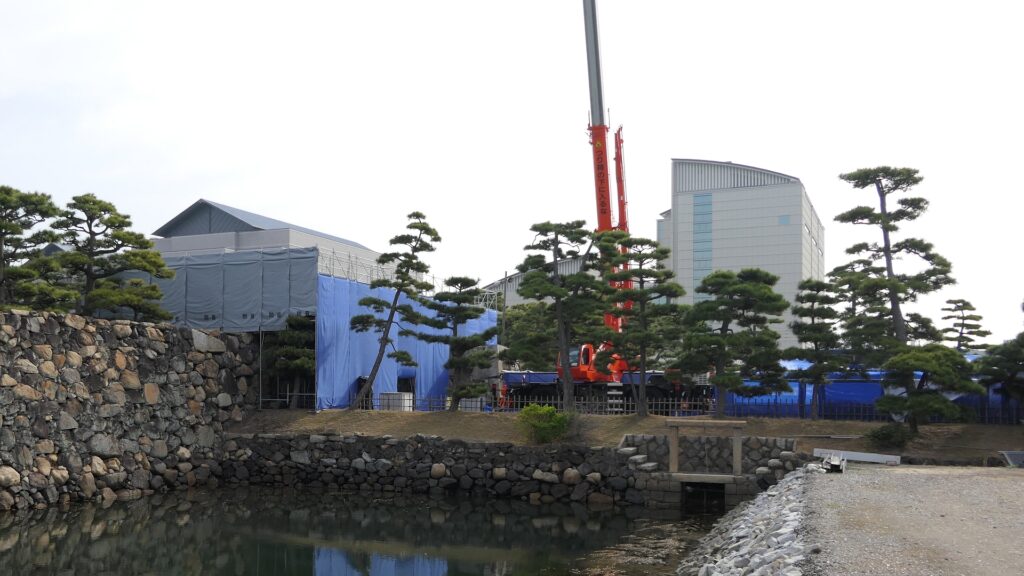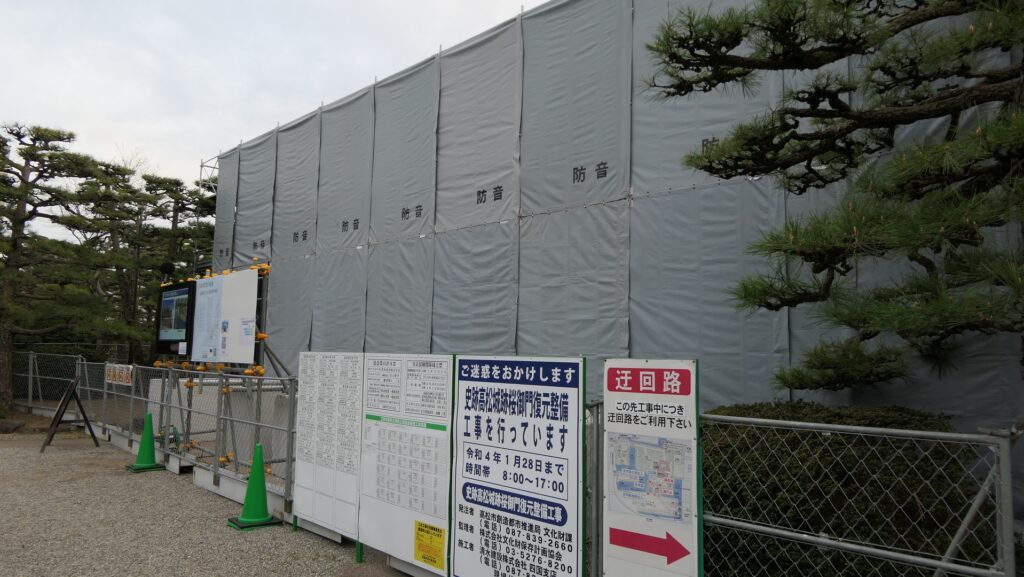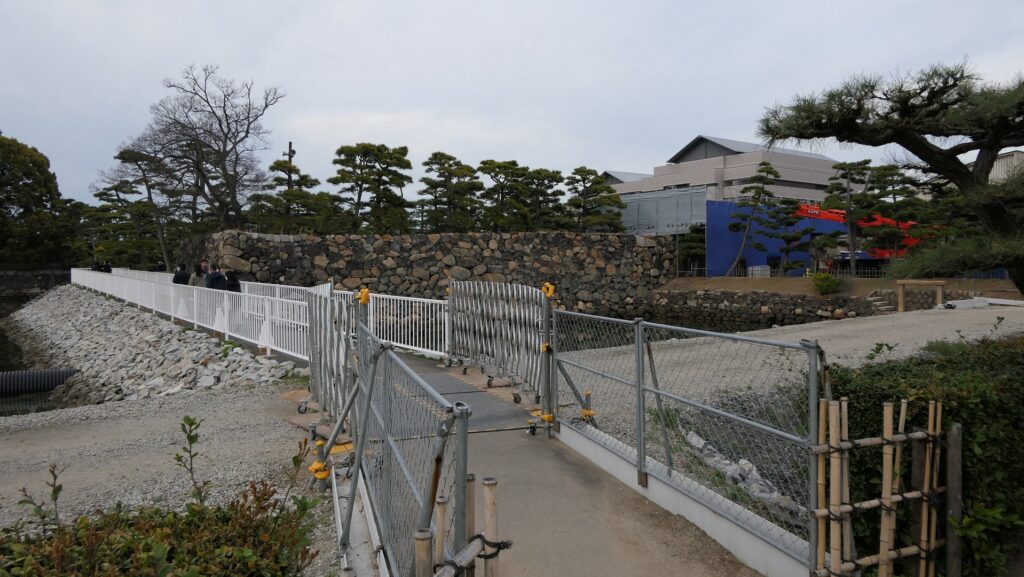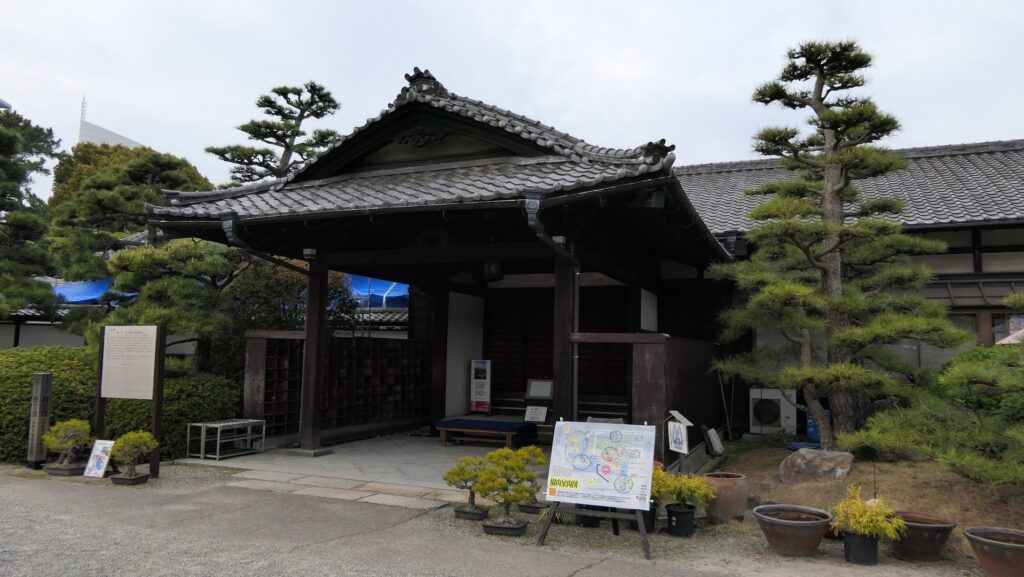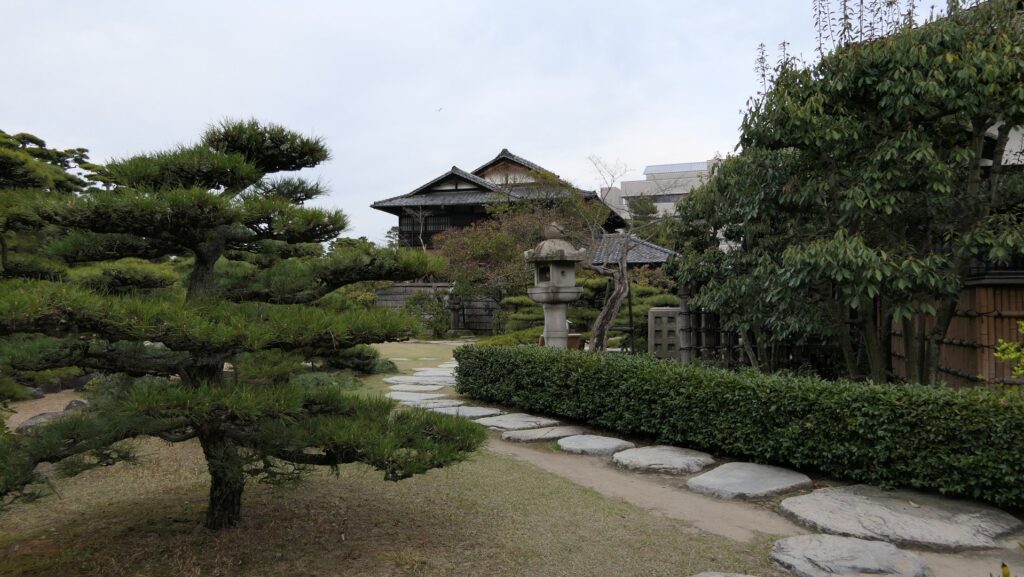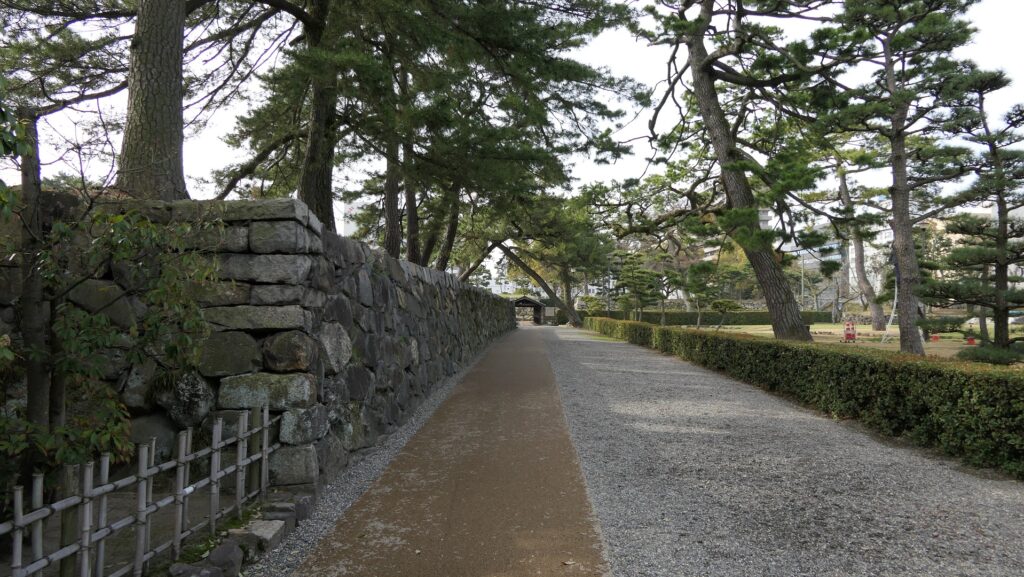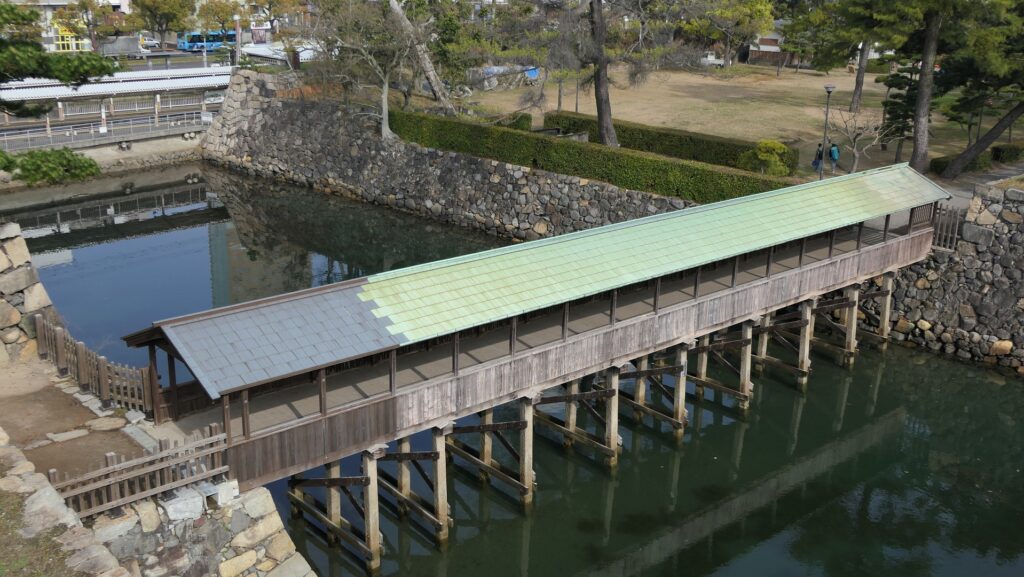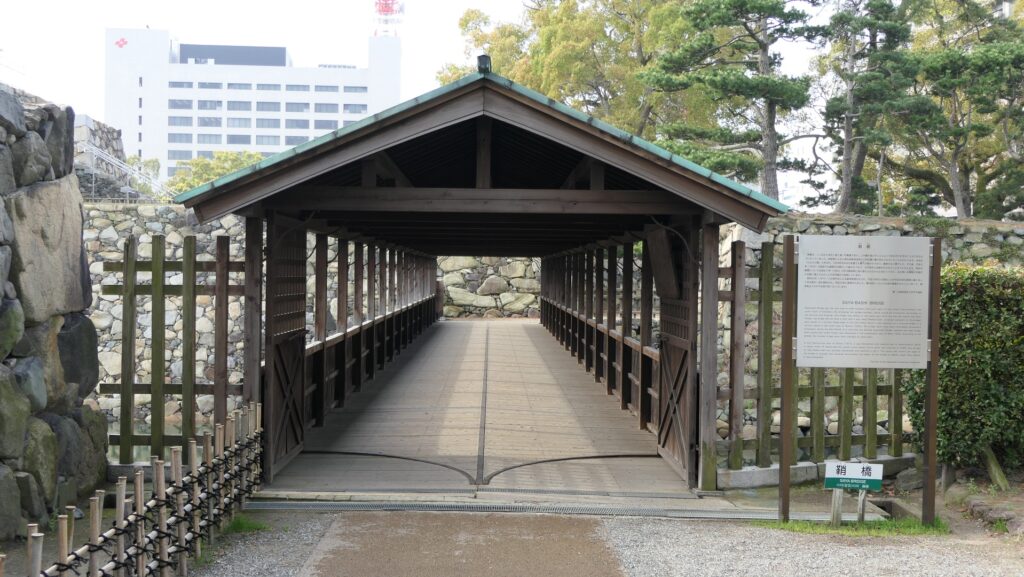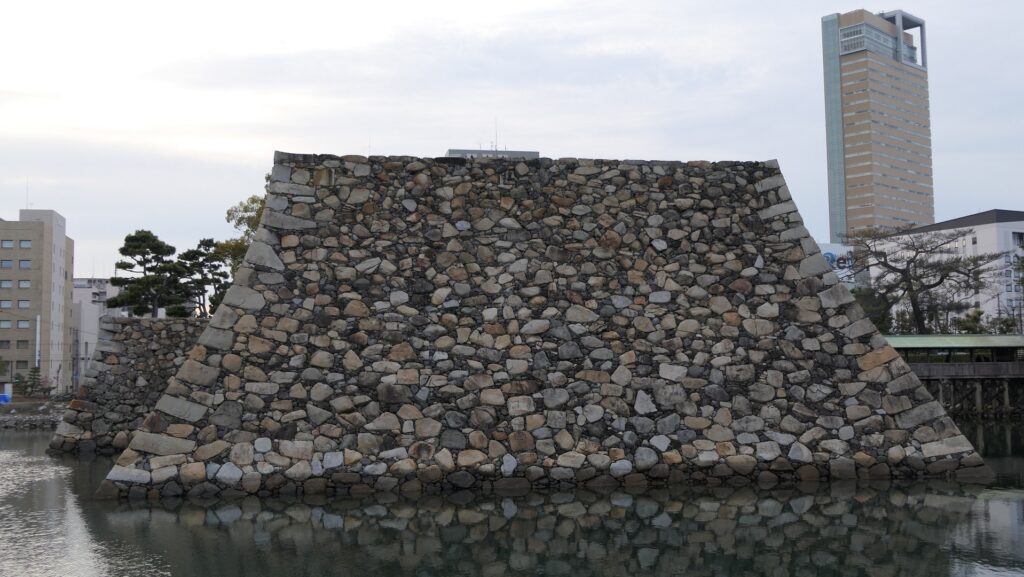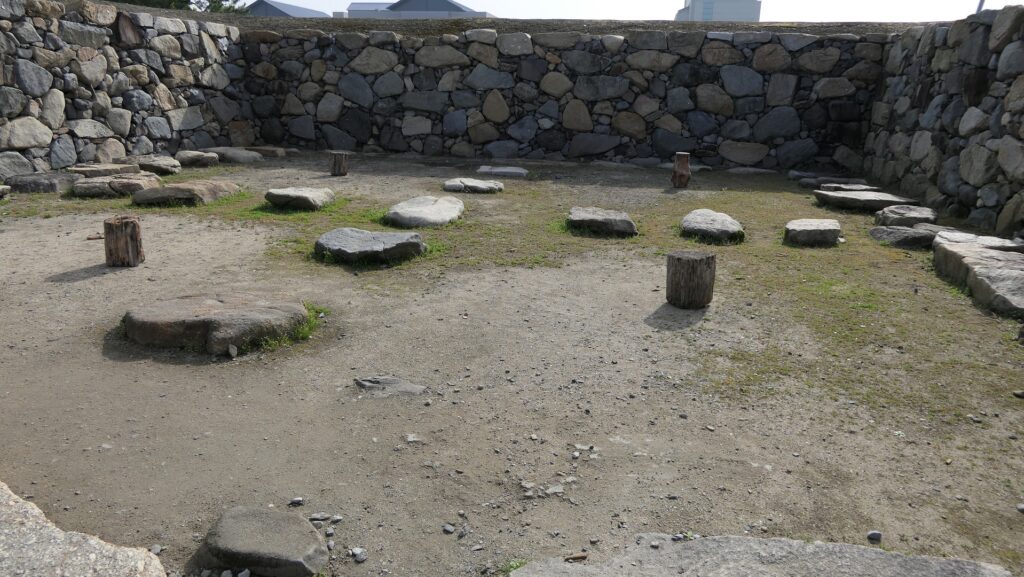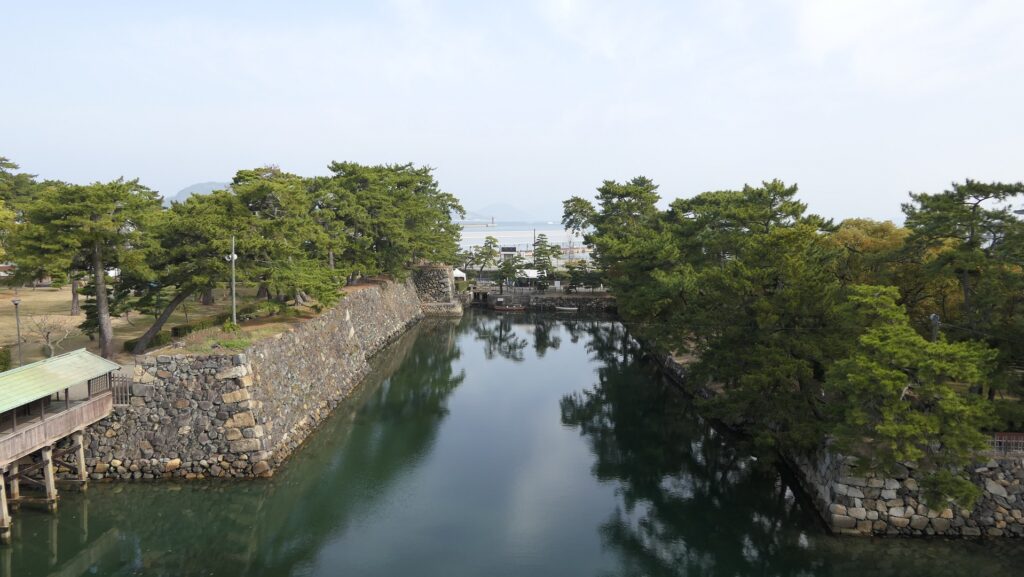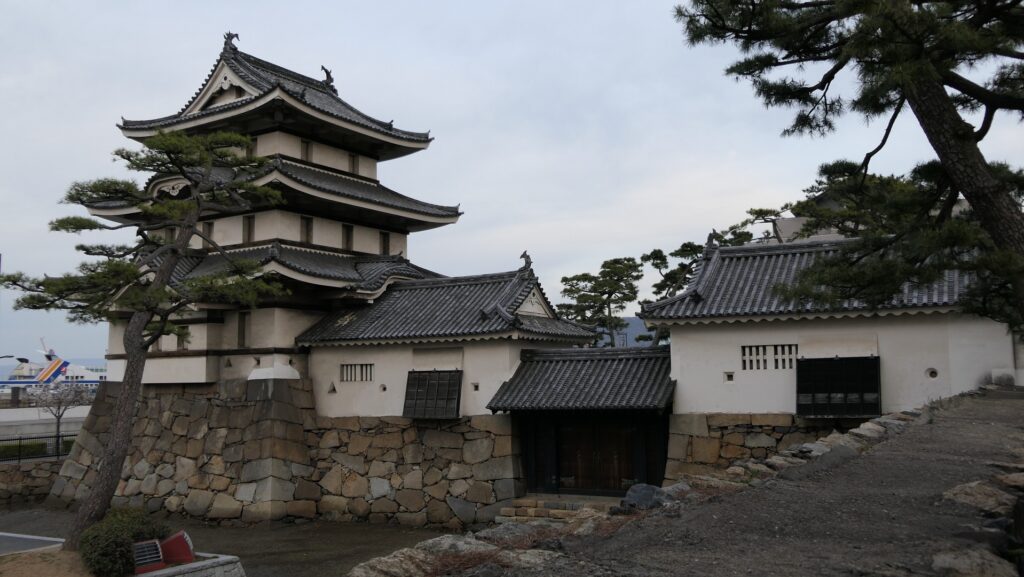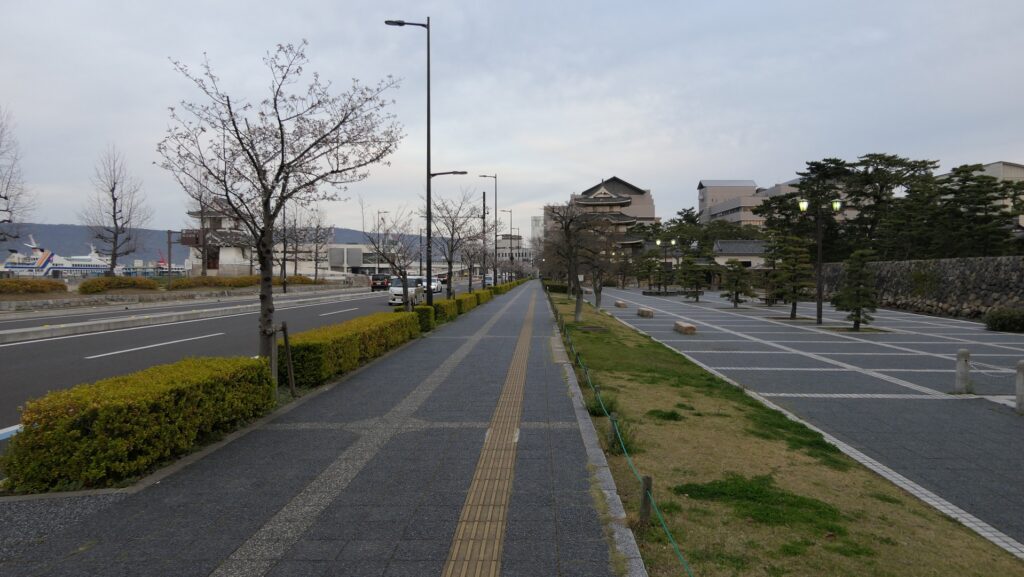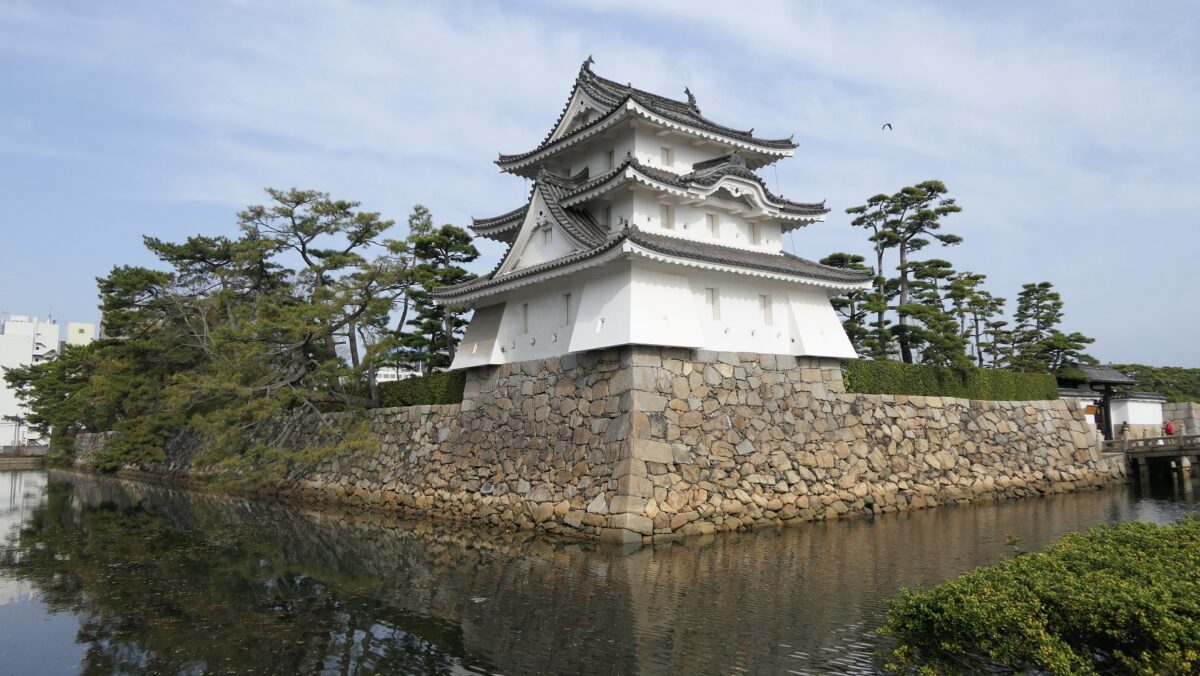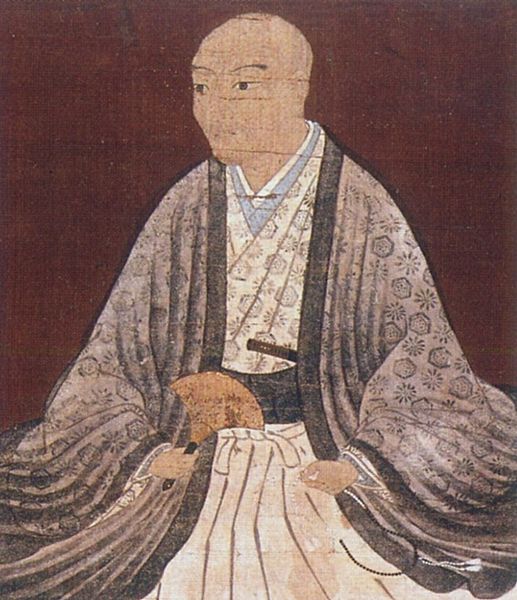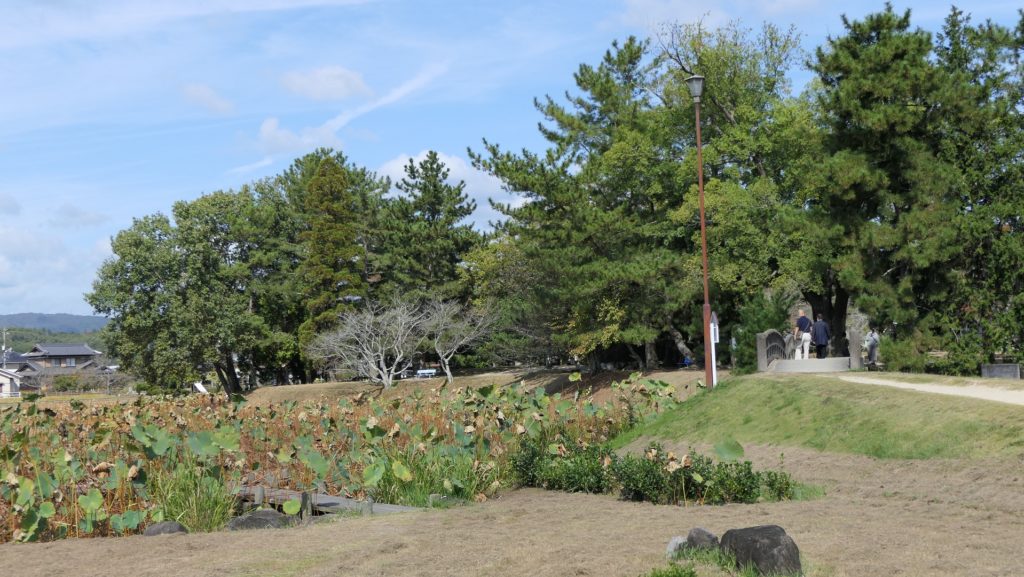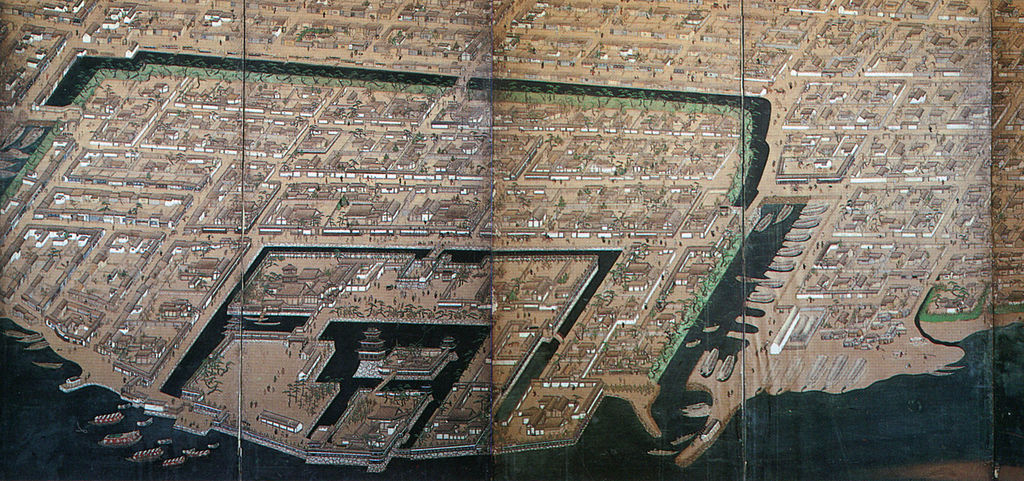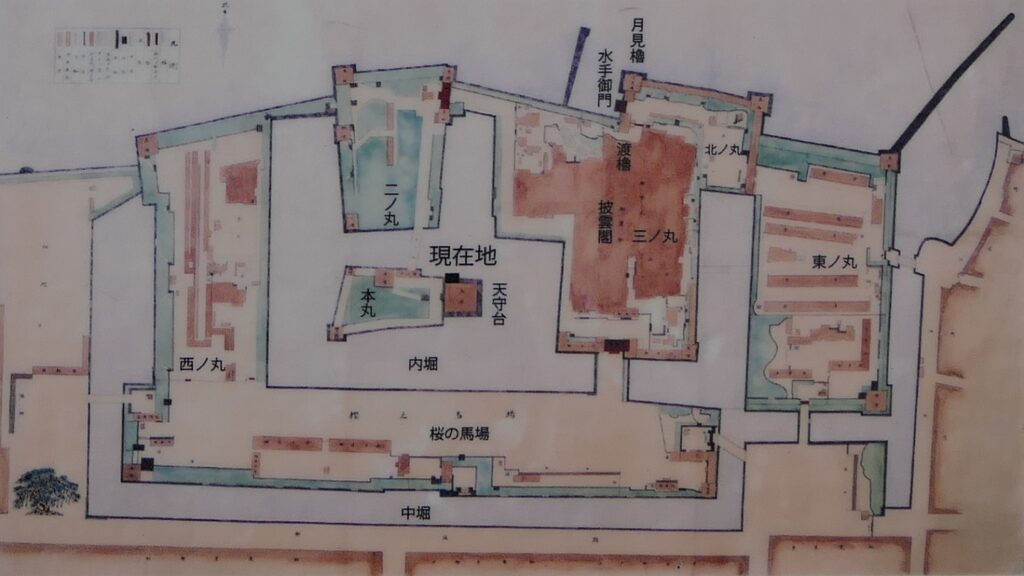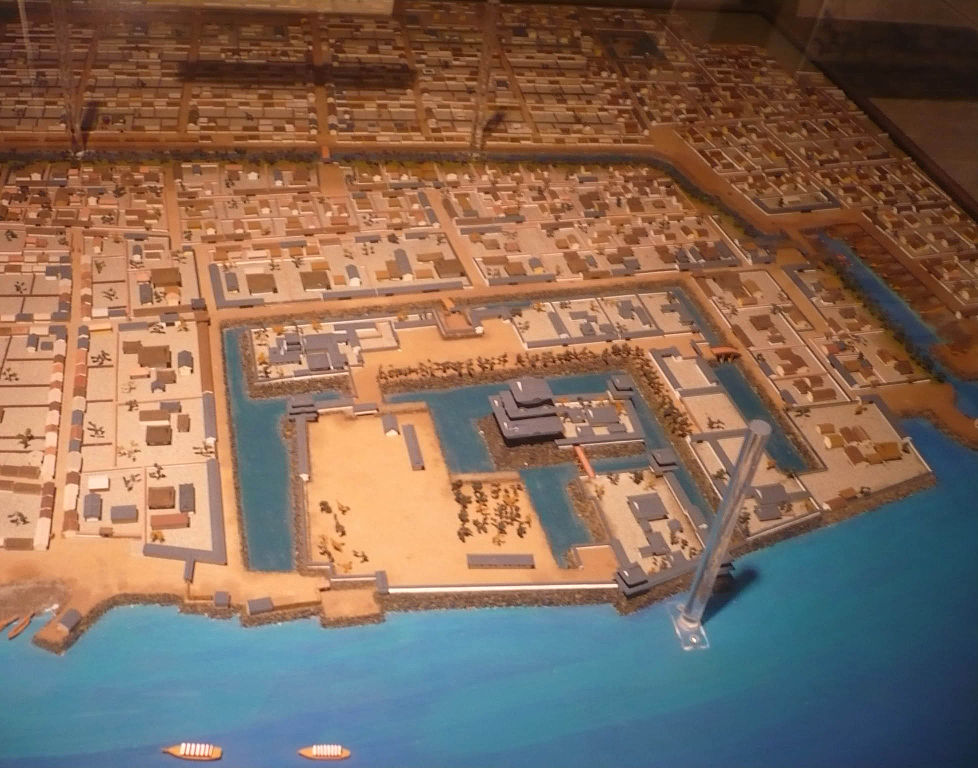Features
Remaining Stone Walls in City Area
If you have more time, how about visiting the eastern area of the park, the former Eastern Enclosure? The area was turned into a city area, but part of the original stone walls remain among modern buildings. The remaining Ushitora-Yagura Turret was originally built in this area.
The aerial photo around the castle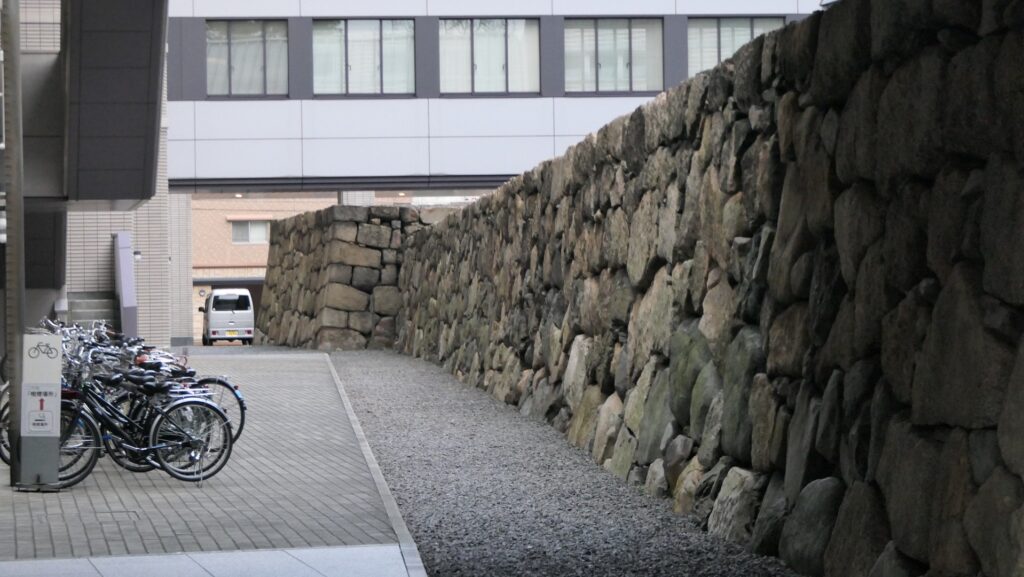

Later History
After the Meiji Restoration, Takamatsu Castle was abandoned, most of its buildings including the Main Tower were demolished, and many parts of it were turned into the city area. However, the former lords of the castle, the Matsudaira Clan bought the remaining primary part of the castle and lived in it. The part finally became the public Tamamo Park in 1955. The remaining turrets and gate were also designated as Important Cultural Properties in 1950.
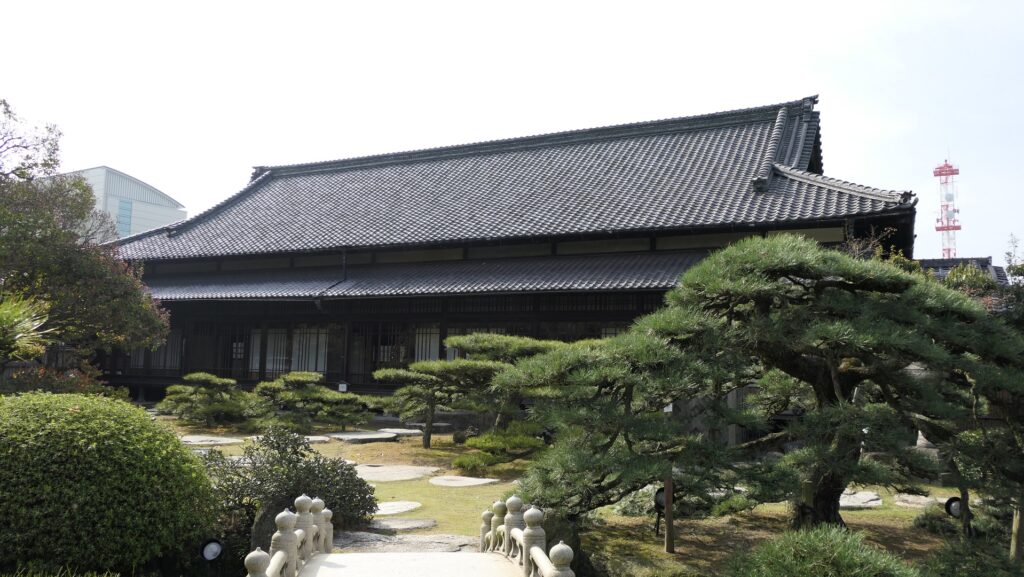
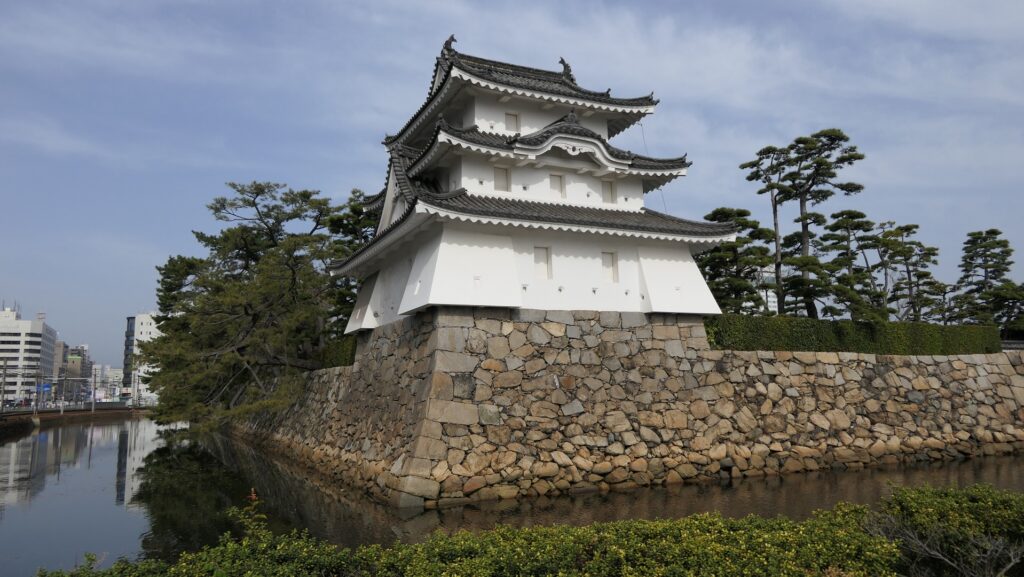
In addition, Takamatsu City is collecting records to restore the Main Tower. The tower had three-layers and four-stories. Its appearance was very rare, with the first and forth floors overhanging, called Nanban-zukuri or the Western Style. The city has confirmed its external appearance while its interior is still largely unknown. It is asking the citizens to offer old pictures and documents, even offering rewards.
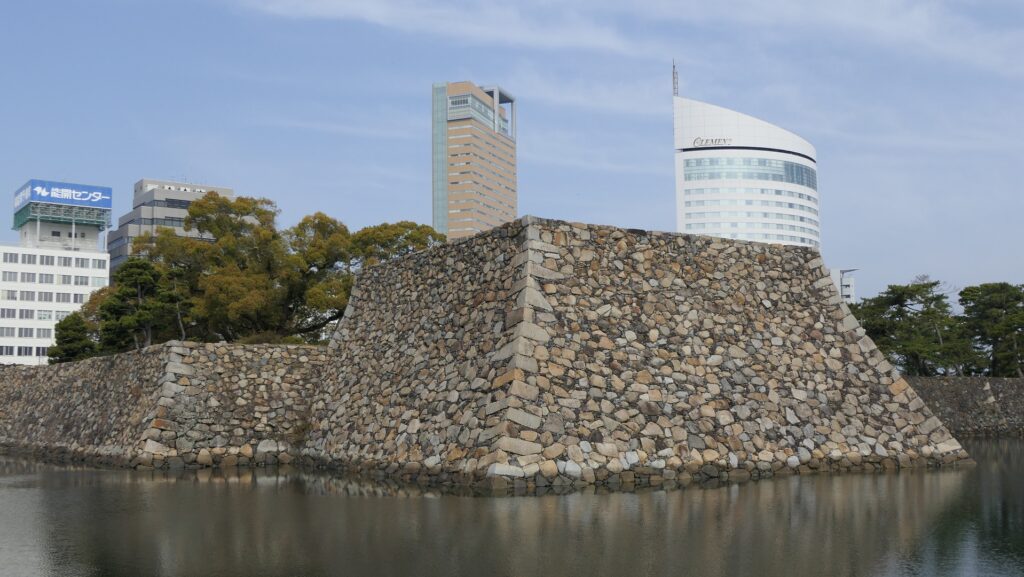


My Impression
I’m very interested in the plan to restore the Main Tower of Takamatsu Castle. If the restoration is done, the castle may look like a floating castle on the waves again. However, the essential value of castle ruins belongs to the remaining items. In the case of Takamatsu Castle, I like the remaining Tsukimi-Yagura Turret the best, but it doesn’t stand out like it used to. I hope the officials also think about how the turret looked in the past.
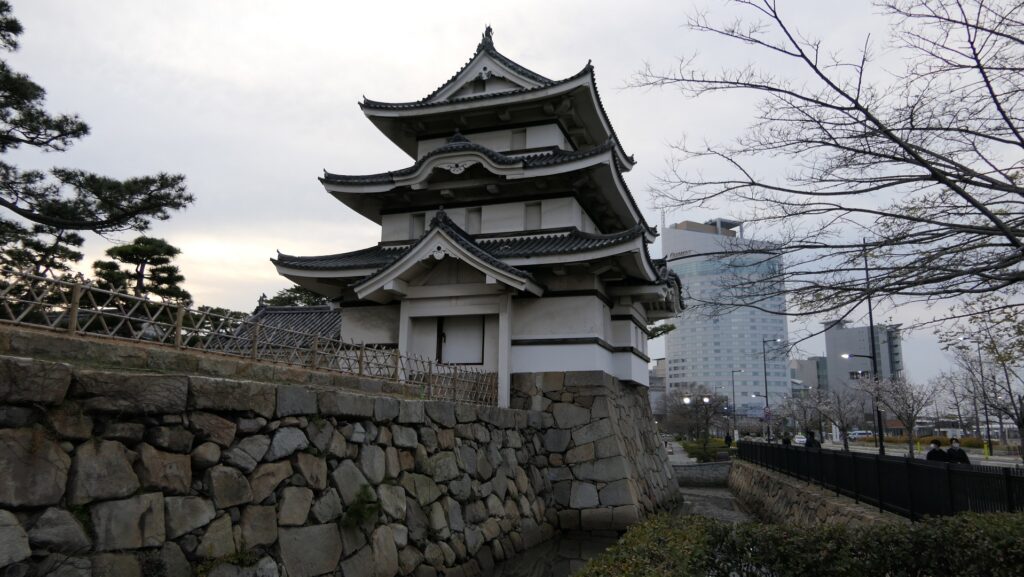
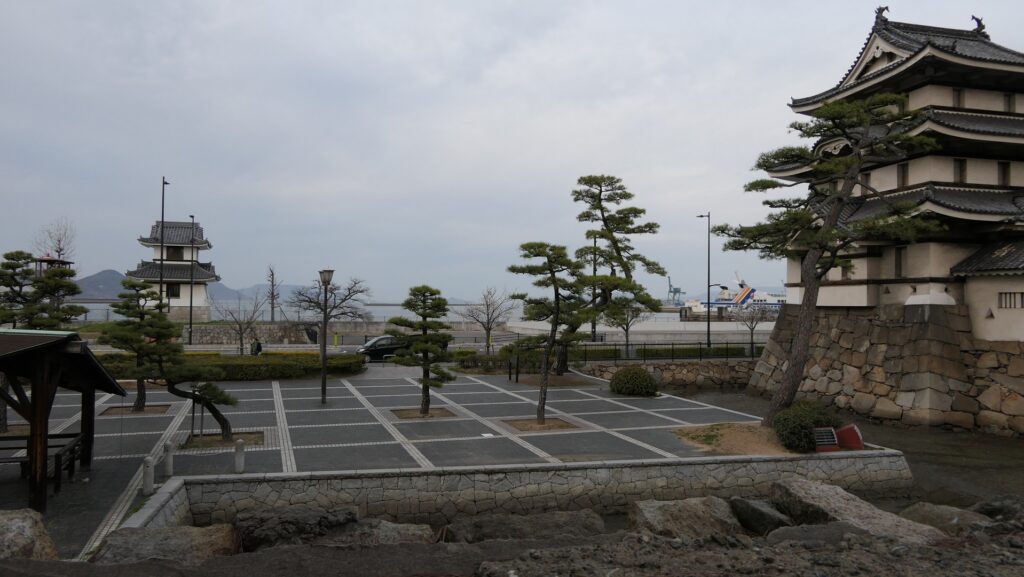
How to get There
If you want to visit by car:
It is about 20 minutes away from Takamatsu IC on the Takamatsu Expressway.
You can park at Tamamo Park.
By train, it is few minutes away from JR Takamatsu Station on foot.
To get to Takamatsu Station from Tokyo or Osaka: Take the Tokaido or Sanyo Shinkansen super express and transfer at Okayama Station to the Seto-Ohashi Line. Take a train called the Marine Liner bound for Takamatsu.
That’s all. Thank you.
Back to “Takamatsu Castle Part1”
Back to “Takamatsu Castle Part2”

